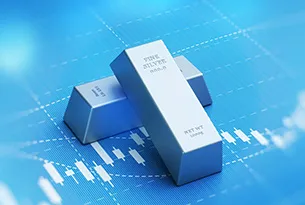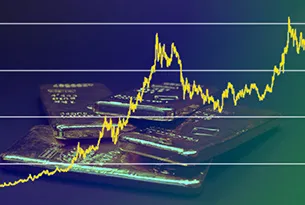The corporate bond space is crucial, says advisor T. Dale, who recommends that retail investors use mutual funds and ETFs to get exposure. He also discusses why historical precedent shows that debt is likely to rise in the developed world.
Kate Stalter: We are talking about yield in a low-interest-rate environment with today’s guest, T. Dale of Security Ballew Wealth Management.
So T., what do you see as the best strategy these days for investors who are seeking yield?
T. Dale: This morning, as we look at the credit space, the areas that have reasonably attractive yields without undue risk include the investment-grade corporate bond, as well as select high-yield corporate bonds. In those areas, an investor can expect to make between 4% and 7% annualized coupons.
- Also read: The Top 7 Bond Funds Around
Believe it or not, we are also in the camp that US Treasury bonds—particularly those of longer durations—can have a place in an investor’s portfolio, despite historically low yields on them.
Kate Stalter: How about dividend-yielding equities? Where do you see those headed?
T. Dale: We do like them, especially the multinational, the dividend-yielding equities. Kate, today you can get a dividend yield in some companies still pushing 3.5% to 4% for many blue-chip companies like AT&T (T), Pfizer (PFE), and Johnson & Johnson (JNJ), just to name a few examples.
Of course, what you want to be careful of is if you are not able to stomach the volatility that always comes with investing in equities.
One of the things that we do encourage investors to think about is having some money in corporate bonds, as well as Treasury notes and bonds, that can help offset the volatility that come with equities. Particularly when you are in a recessionary environment, because interest rates tend to fall when we go into recession. So the rising price of bonds can often offset the falling price of equities.
Kate Stalter: Talking about corporate bonds a little bit: Do you suggest that investors go into the individual bonds, or should they invest using a fund?
T. Dale: Particularly for non-institutional investors, going into either an exchange traded fund, as well as some good professionally managed funds, is the way we recommend clients go.
That is primarily for diversification reasons, because sticking with an individual issue, or two, or three, or four, is really probably all that the typical investor can obtain in their portfolio. So we do tend to recommend using professionally managed funds, as well as exchange-traded funds for that exposure.
Kate Stalter: Any particular ones that come to mind, or should investors just kind of shop around?
T. Dale: Sure. Well, as many investors have probably heard, there is a man known as the bond king, Bill Gross. He started a company called PIMCO, and they have an array of very good fixed-income funds with good track records.
PIMCO Total Return (PTTRX) is an example of a fund that I do use for my own clients’ use. There is also a fund that they have called the PIMCO Income Fund (PIMIX). That is the fund where the manager has more flexibility and discretion to go into the higher-yielding space and try to obtain higher yields.
In the exchange traded sector, there are two ETFs that I tend to like for the corporate investment-grade bonds, as well as the high-yield bond sector. The first one is iBoxx $ Investment Grade Corporate Bond Fund (LQD). That is a corporate investment-grade ETF that owns corporate bonds with intermediate-term durations. That yield presently is in the 4% range.
Then, if you are willing to step out the risk spectrum a little bit into the high-yield space, there is an ETF, the iBoxx $ Investment Grade Corporate Bond Fund (HYG). That is closer to a 7% yield.
Just understand, be careful that if you buy HYG, because it is going to trade closer to the volatility of the stock market. So it doesn’t come risk-free; it will have some volatility if we go into recession.
- Also read: Are Bond ETFs Raising a Warning Flag?
Kate Stalter: Just to wrap up today: As I understand it, you are a student of market history. What can investors learn by studying historical precedent? What should they know?
T. Dale: If you spend any time, particularly today, it is becoming readily apparent to students of market history around the world that one of our major problems that we are having to work through in a global economy is the over-indebtedness circumstance that exists. Not only in the United States, but believe it or not we are in good shape compared to Europe as a whole, as well as to Japan.
That is important to understand, because history will show you that when indebtedness circumstances occur, such as those exist today, the growth rates of your economy will begin to slow below the historical norms, simply because more and more monies happen to be devoted to servicing debt.
The good news since our real-estate bubble burst and the housing bubble came down is that private-sector debt levels are coming down, as they should.
Unfortunately, though, we are seeing government debt levels go to alarmingly high levels, particularly in countries like those in Europe, the United States, and Japan that have aged populations. You are going to see social programs, such as we have Social Security and Medicare, continue to strain the budgets in developed economies.
The long and short of that is that if you spend any time looking at history, you cannot ignore the debt levels as it relates to making your investment assumptions going forward, because they are far, far higher today than they have been in any other postwar period of time.
- Also read: 4 ETFs for Another Tough Year



































